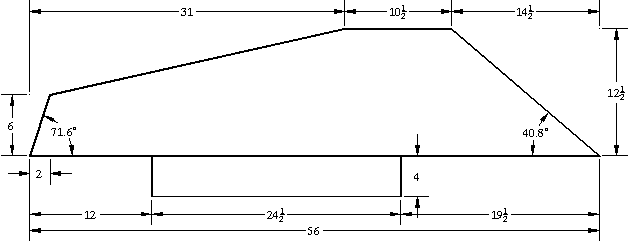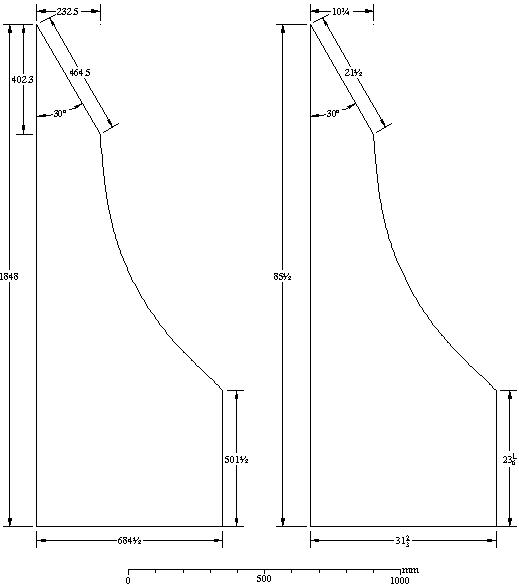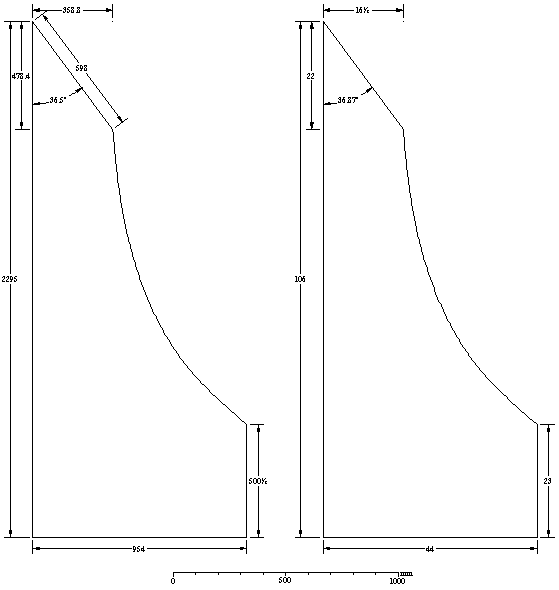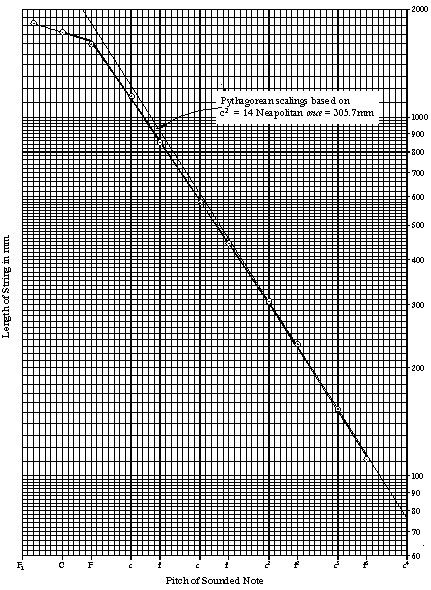General
background information leading to the design and construction of these
harpsichords
Because of my interest in the
analysis of the unit of measurement used to design and construct
historical Italian keyboard instruments, I had long considered the possibility
of actually building an instrument in the old manner using the unit of
measurement of the centre where the instrument being copied had been made. For example, it would be possible to make an
Italian virginal in the Venetian style, using measurements based on the
Venetian oncia:

The baseboard dimensions expressed in Venetian once
= 29. 98mm
1552 Franciscus Patavinus Venetian virginal
Museo Correr, Venice
The simplicity and elegance of this design and the fact that this was the
actual instrument in which I had discovered the use of
geometry and the unit of measurement in the construction of early stringed
keyboard instruments mean that my first impulse was to make a
Venetian virginal such as the Franciscus Patavinus above, or perhaps a Venetian
harpsichord. But my fascination with the Neapolitan school quickly lead me away
from this idea and towards an instrument in the Neapolitan style and tradition.
![]()
The design and
construction of a proto-typical Neapolitan harpsichord
My familiarity with a number of
instruments built in the
Neapolitan style, and especially with the 1651
Onofrio Guarracino harpsichord belonging to Maestro
Andrea Coen in Rome, enabled me to
recognize an instrument with a false signature in the Gemeentemuseum in the
Hague as another harpsichord by Onofrio Guarracino.

The measured baseboard dimensions (left) and the same
dimensions expressed in Neapolitan once (right)
Single-manual harpsichord of 1651 by Onofrio Guarracino,
Naples
Andrea Coen, Rome
The baseboard of the instrument
in the Hague has been removed but is preserved separately and can be measured
and studied in detail. The plan of the
instrument with the position and size of many of its features have been scribed
out on this baseboard.

The measured baseboard dimensions (left) and the same
dimensions expressed in Neapolitan once (right)
Single-manual
harpsichord attributed by me to Onofrio Guarracino, Naples, c. 1690
Gemeentemuseum, The Hague, Catalogue Nº 1933.0543
The harpsichord in The Hague,
like the harpsichord belonging to Andrea Coen, has an unusual lower case
moulding. It is wide, like the usual
lower moulding used in Guarracino’s virginals (and indeed at least two other as-yet
un-recognised Guarracino harpsichords) and, like many instruments built in
Naples, it projects below the baseboard.
However, The Coen and Gemeentemuseum harpsichords have a totally
different shape from the normal virginal lower outer case moulding. In these instruments this mouldings is, in
fact, composed of two separate moulding profiles one of which is the same as
the outer portion of the top moulding.

Spine section, single-manual harpsichord attributed by me
to Onofrio Guarracino, Naples, c. 1690
Gemeentemuseum, The Hague, Catalogue Nº 1933.0543
The case-side construction, the lower outer moulding and the hatched section seen in the diagram above are discussed in the section elsewhere on this site called case side construction.
The string scalings of the instrument in the Hague also follow an extremely simple pattern and are based on c2 = 14 once:

The string scalings
Single-manual harpsichord attributed by me to Onofrio
Guarracino, Naples, c. 1690
Gemeentemuseum, The Hague, Catalogue Nº 1933.0543
Measurement of these various
features, including the position and lengths of the strings, shows that they
are all, as expected, based on the Neapolitan oncia.
The plan of the baseboard is extremely simple and elegant, and the string design is marked out on the baseboard. The distance of the bridge from the bentside is constant and uniform and was measured to be 6 once for the whole of the main section of the bridge. Click on the image below to see this illustrated on another harpsichord attributed to Onofrio Guarracino and belonging to Fernanda Giulini, Villa Medici-Giulini, Briosco, Italy
This simple case and string-scaling design
suggested to me that it would be extremely easy and quick to build a
harpsichord in the same way as Guarracino using only a few basic measurements
and without resorting to the use of a full-scale drawing.
A listing of the characteristics of Neapolitan harpsichords
The next section: The design of a prototype Neapolitan harpsichord

